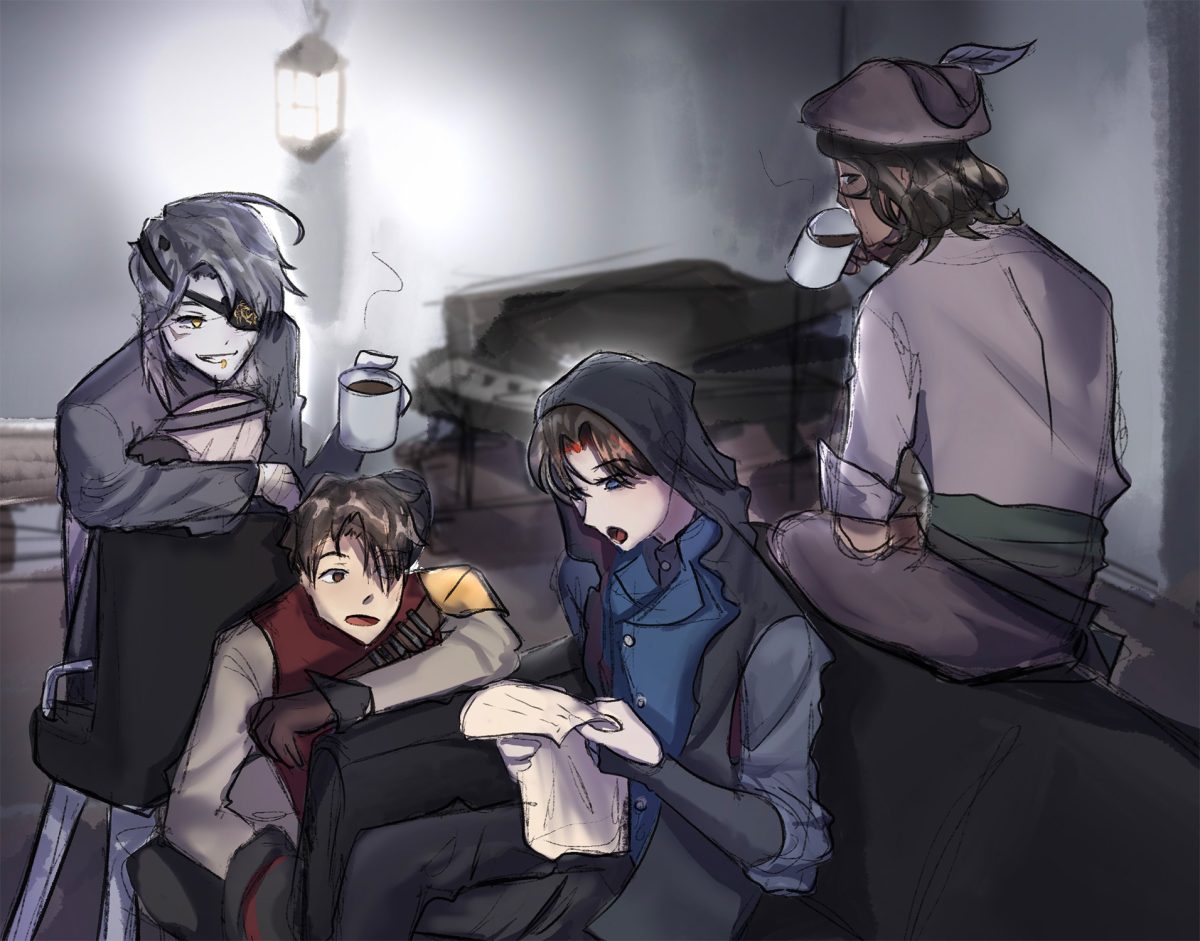Dungeons & Dragons (D&D), a fantasy tabletop roleplaying game (TTRPG), has a mass following of more than 50 million players to date, according to an infographic released by Wizards of the Coast, the official owner of D&D. However, a group of moms in the 1980s regarded the game as demonic. This created a hysteria around the game, earning it the nickname, “The Satanic Panic.” But why is the game so popular today despite this? What does it have to offer?
Game designers Gary Gygax and Dave Arneson first introduced D&D in 1974. It wasn’t until the 2016 release of the popular Netflix show “Stranger Things” that the game truly took off. According to The Guardian, Google searches for Dungeons and Dragons starter sets rose by 250% after “Stranger Things” season 4 was released, as well as searches for how to play Dungeons and Dragons increased by 600%.
When D&D first appeared in the ‘80s, certain people, quickly followed by the media, began painting the D&D community as a satanic cult. A group of parents of D&D players who called themselves “Bothered About Dungeons and Dragons” were at the forefront of the anti-D&D movement. “Mazes and Monsters,” a 1982 film starring Tom Hanks, gained traction with the anti-D&D movement after the movie portrayed a fictional fantasy role-playing game based on D&D as satanic and deadly.
The game is not always viewed in a positive light. “Some religious figures cast [D&D] as corrupting enough to steer impressionable young players toward suicide and murder,” Clyde Haberman wrote in a 2016 New York Times article. “[The persecution of D&D] was not unlike 1950s fears over gory comic books and 1980s worries over sex-laced rock music.”
“It’s generally superstition,” said Avi Katzman ‘26, one of the seven heads of D&D Club. “[The media] just kind of portrays D&D as a culty thing with costumes.”
Over 25 students at Urban are members of the D&D club and even more play outside of school. What makes this game so appealing despite its rumored ties to satanism?
Many still enjoy the game for the sense of community and connection it provides. “D&D is about a group of people with wildly different pasts coming together to create an intentional family and overcome adversity,” said D&D’s lead designer, Jeremy Crawford, in an interview with The Guardian.
“D&D is a more community-based [game] where you have much more agency over your storytelling,” said Theater Teacher Maya Herbsman ‘13, who has been playing D&D for around a year. “I think especially at Urban, where it’s a pretty rigorous academic environment, it can be a great way to escape.”
The game is not always viewed in a positive light. “Some religious figures cast [D&D] as corrupting enough to steer impressionable young players toward suicide and murder,” Clyde Haberman wrote in a 2016 New York Times article. “[The persecution of D&D] was not unlike 1950s fears over gory comic books and 1980s worries over sex-laced rock music.”
“It’s generally superstition,” said Avi Katzman ‘26, one of the seven heads of D&D Club. “[The media] just kind of portrays D&D as a culty thing with costumes.”
In D&D, players can create characters in any way, shape or form. People add bits of their personality to their characters, making each one unique. “A group of players are stronger because of their differences from each other. … You want a group that is powerful because of its diversity,” said Crawford.
Many members of the LGBTQIA+ community have used D&D to build community. “As queer folks, we don’t have as much representation in media. So how do you fix that? You make it yourself,” said Herbsman.
D&D has often been viewed as a pastime for social misfits or those who are out of touch with reality. “D&D’s influence, however, abides, notably among creative types who acknowledge that they qualified as full-blown nerds in their teens,” Haberman wrote.
“Every[one] portrays D&D as either a nerdy hobby or just some guy with a bajillion minifigures,” said Katzman. “But I’m perfectly fine doing nerdy things.”


